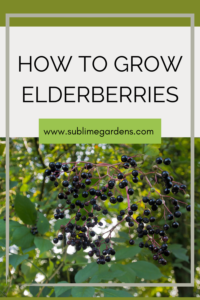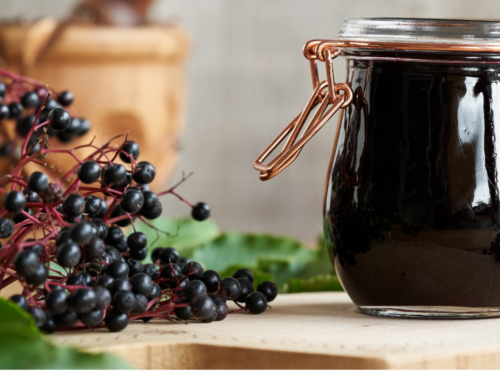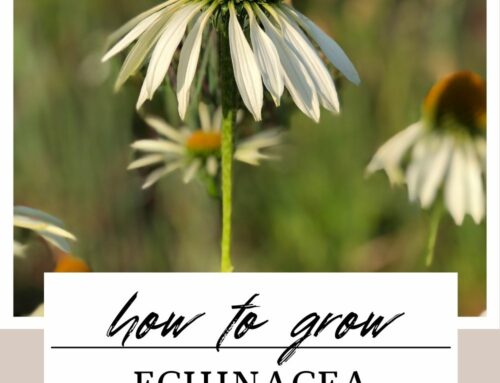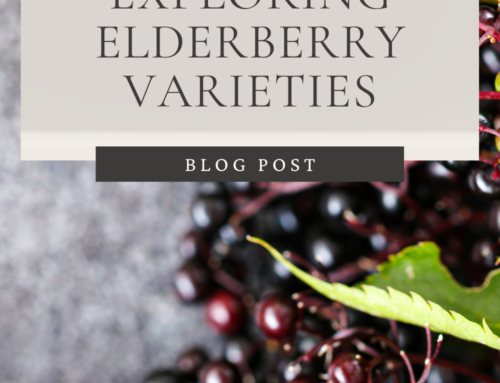How to Grow Elderberries
Elderberries are a beautiful addition to your garden, and also offer a powerhouse of nutrients and medicinal properties. The small dark berries of the black elderberry varieties have been used for centuries in traditional medicine and herbalism, and offer incredible immune-boosting benefits. Elderberry plants truly are the whole package, offering you a long-lived beautiful perennial addition to your garden along with flowers and berries that are not just for show.
Choosing the Right Variety: There are several varieties of black elderberries, but the most common for home gardens are the American elderberry (Sambucus canadensis) and the European elderberry (Sambucus nigra). There are also red elderberries which are native to the Pacific Northwest, but the berries are not edible. At Sublime Gardens in Snohomish Washington, we offer the classic Black Elderberry as well as other varieties of American elderberry including: Adams Elderberry, Ranch Elderberry, and Bob Gordon varieties. All are excellently adapted to thrive in the various climates in North America. We also offer the Emerald Lace variety of the European Elderberry.
- American Elderberry: The classic American black elderberry – (Sambucus canadensis), is well suited to the North American climate and provides beautiful shiny black berries that will make delicious jams and syrups.
- Adams Elderberries: One of the oldest and most prolific varieties of elderberry, the Adams variety provides abundant blooms of flowers and large fruit clusters that ripen in late September.
- Ranch Elderberries: Offer all the benefits of an elderberry plant in a small compact package, making harvesting easy and convenient. They are also tolerant of poor soil conditions and are known for thriving in a variety of conditions.
- Bob Gordon Elderberries: This low-maintenance variety has sweeter and larger berries than other varieties, a great option if you want a large harvest of juicy medicinal berries.
- Emerald Lace Elderberries: This rare European elderberry variety has green, fern-like foliage that resembles a Japanese maple. It offers a beautiful edible harvest and is attractive to birds and pollinators.
Cross-Pollination: American elderberries are more prolific when cross-pollinated, so purchasing plants in a set is your best bet to provide a bountiful harvest of flowers and berries.
Planting Elderberries:
- Site Selection: Elderberries prefer full sun to partial shade. They thrive in well-drained, loamy soil but can tolerate various soil types.
- Spacing: Plant elderberries about 6-10 feet apart to allow for proper air circulation and growth.
- Planting Time: Plant elderberries in the spring after the last frost or in the fall before the first frost.
Soil Preparation:
- Soil pH: Elderberries prefer a slightly acidic to neutral pH (5.5 to 6.5).
- Soil Amendment: Work in compost or well-rotted manure to enrich the soil. If you have poor soil, the Ranch Elderberry is a hearty choice.
- Planting: Place the plant in the hole, ensuring the root crown is level with the soil surface.
Caring for Elderberries:
- Watering: Keep the soil consistently moist, especially during the first year. Elderberries have shallow root systems and can dry out quickly. When well established, elderberries thrive in the Pacific Northwest without much maintenance.
- Mulching: Apply a layer of mulch around the base to retain moisture and suppress weeds.
- Fertilizing: Use a balanced fertilizer in the spring to encourage growth. I like to work with organic blends, or simply apply compost.
- Pruning: Prune elderberries in late winter or early spring to remove dead or damaged wood, and to encourage new growth.
Elderflowers: Elderberry flowers are incredibly fragrant, and bloom in beautiful white umbels. The flowers are often harvested to be dried as a delicious medicinal tea, or used to make your own Elderflower Cordials to add to your summer cocktails (or mocktails!)
Harvesting Elderberries: Elderberries typically ripen from mid-August to September. Harvest them when they are fully ripe, as unripe berries can be toxic. Use a pair of scissors or pruners to cut the berry clusters from the bush. Keep an eye out for my upcoming blog post on how to make your own immune-boosting Elderberry Syrup.








Leave A Comment